A thing of beauty is a joy forever. – John Keats
If you’re looking to add a touch of nature to your home décor, hanging plants are a great option. But if you’ve never hung a plant before, it can seem like a daunting task. Don’t worry – we’ve got you covered.
In this post, we’ll share everything you need to know about hanging plants, from choosing the right plant for your space to tips for keeping it healthy. By the end, you’ll be an expert on all things hanging plants!
The Benefits Of Hanging Plants
Hanging plants have a lot of benefits! They can help purify the air, they look great, and they can even help boost your mood.
Here are some of the top benefits of hanging plants:
1. They Purify the Air
One of the biggest benefits of hanging plants is that they help purify the air. They do this by absorbing harmful toxins and chemicals, and releasing oxygen. This is great for your health, as it can help improve your respiratory system and overall energy levels.
2. They Look Great
Hanging plants also look great! They can add a touch of nature to any room, and they can brighten up even the dullest of spaces. Plus, they’re a great way to show off your green thumb!
3. They Can Boost Your Mood
Another great benefit of hanging plants is that they can boost your mood. Studies have shown that being around plants can help reduce stress and anxiety, and improve your overall mood. So if you’re feeling down, make sure to add some hanging plants to your home.
4. They’re Easy to Care For
One of the best things about hanging plants is that they’re easy to care for. Unlike other plants, they don’t require a lot of watering or maintenance. Plus, they’re great for people who don’t have a lot of space, as they don’t take up much room.
5. They’re Affordable
Hanging plants are also very affordable. You can find them at most stores for a reasonable price, and they’re a great way to add some life to your home without breaking the bank.
So there you have it! These are just a few of the many benefits of hanging plants. If you’re looking for a way to improve your home, hanging plants are a great option.
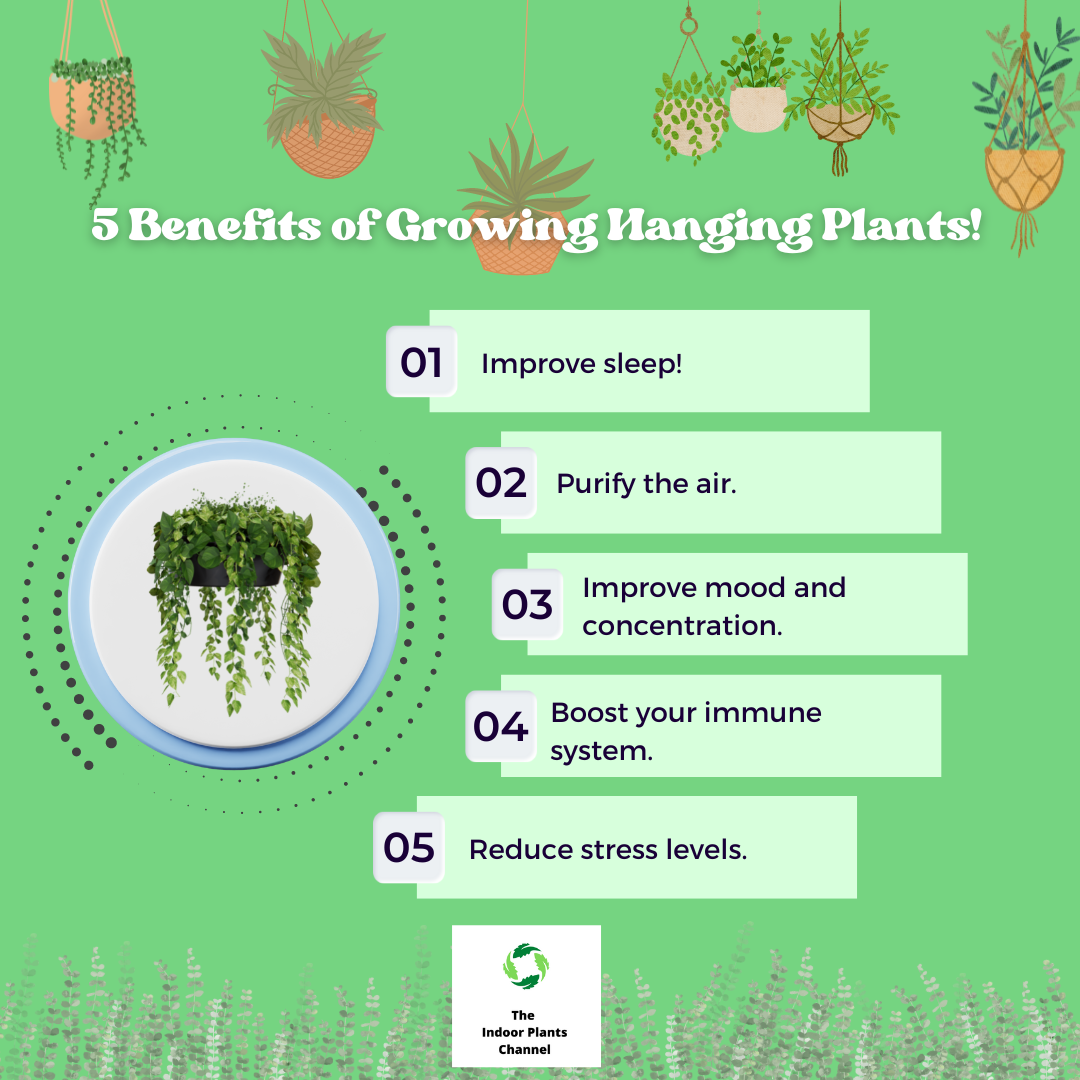
The Different Types Of Hanging Plants
There are many different types of hanging plants, and each has its own unique benefits. Here are some of the most popular types:
1. Ivy – Ivy is a classic choice for hanging plants, and for good reason. It is easy to care for and can thrive in a variety of conditions. Ivy also has a tendency to produce lots of new growth, so it is a good choice if you want a plant that will fill in quickly.
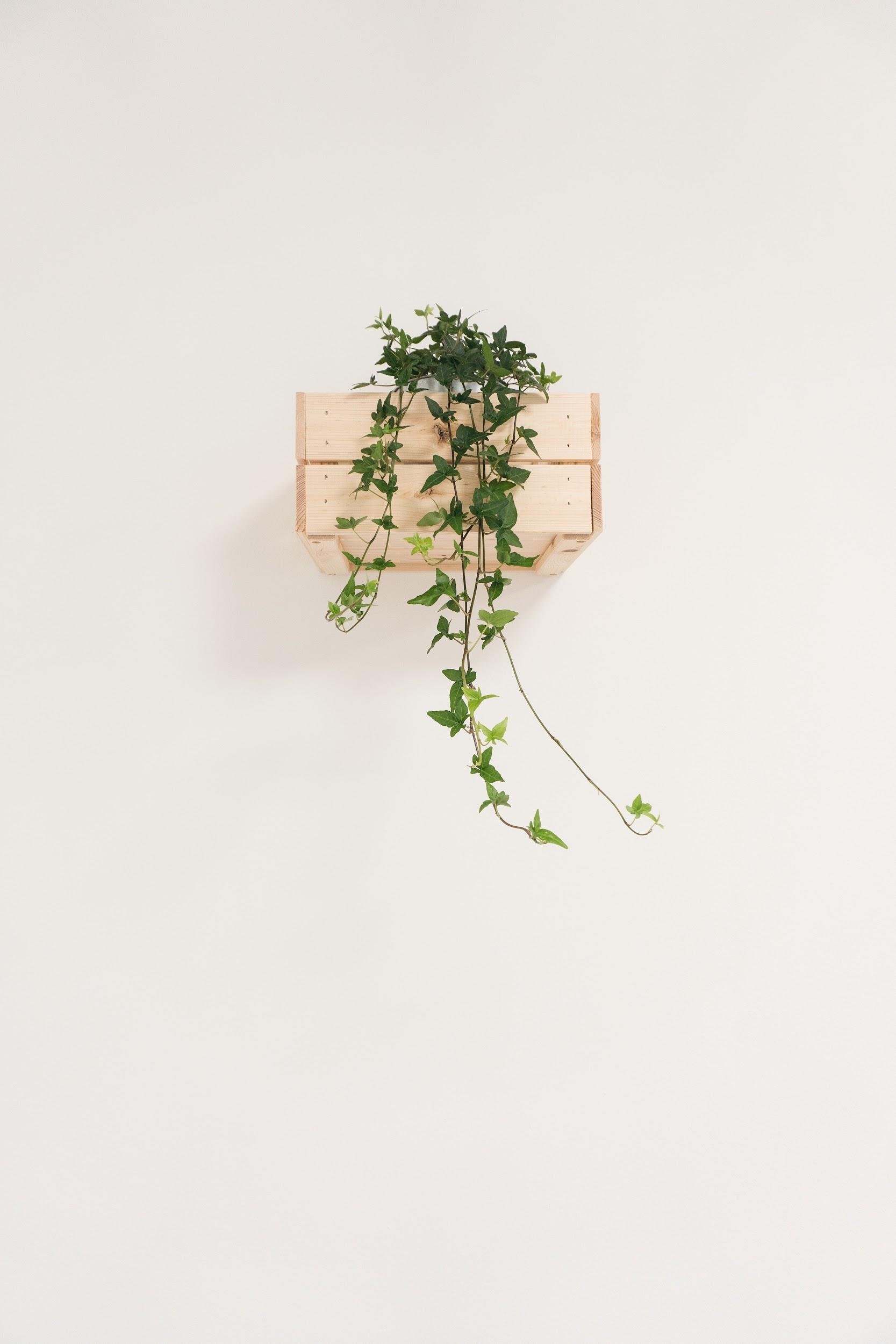
Ivy
2. Ferns – Ferns are another popular choice for hanging plants, and they come in a wide variety of shapes and sizes. Ferns are typically very easy to care for, and they can add a touch of elegance to any space.
3. Orchids – Orchids are a popular choice for hanging plants because they are incredibly beautiful. They can be a bit more challenging to care for than some other types of plants, but they are well worth the effort.
4. Succulents – Succulents are a great choice for hanging plants because they are very easy to care for. They are also very drought-tolerant, so they are a good choice if you live in an area with low rainfall.
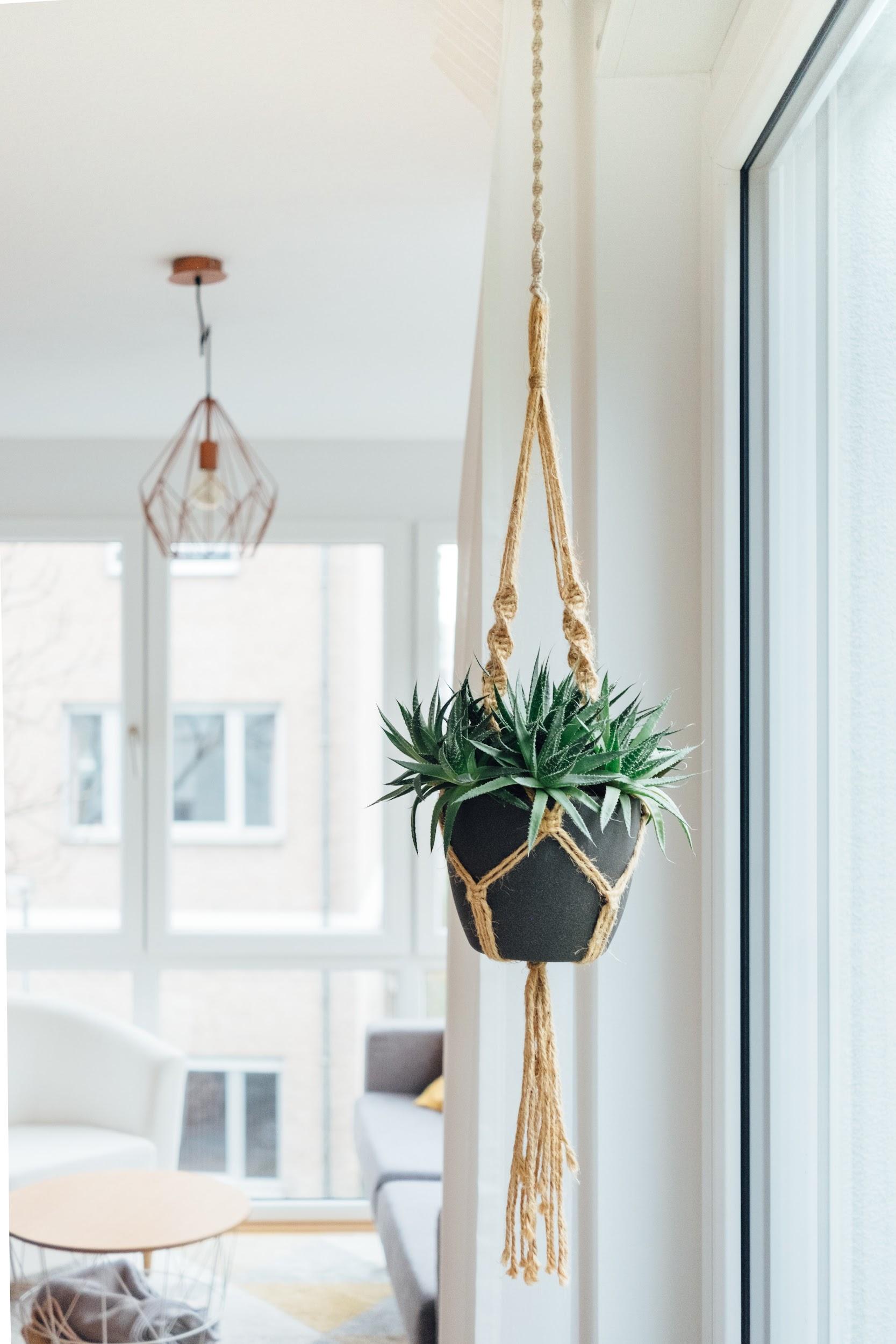
Succulent
5. Cacti – Cacti are another great choice for hanging plants. They are very easy to care for and can thrive in a wide range of conditions. Cacti are also very drought-tolerant, so they are a good choice if you live in an area with low rainfall.
6. Bonsai Trees – Bonsai trees are a popular choice for hanging plants because they are very beautiful and can be trained to grow in a wide variety of shapes. Bonsai trees can be a bit more challenging to care for than some other types of plants, but they are well worth the effort.
7. Air Plants – Air plants are a popular choice for hanging plants because they are very easy to care for. They don’t need any soil, and they can thrive in a wide range of conditions. Air plants are also very easy to propagate, so they are a good choice if you want to add more plants to your collection.
8. Hoya – Hoya is a popular choice for hanging plants because it is very easy to care for. It is also a very fast-growing plant, so it is a good choice if you want a plant that will fill in quickly.
9. Begonia – Begonia is a popular choice for hanging plants because it is very easy to care for. It is also a very drought-tolerant plant, so it is a good choice if you live in an area with low rainfall.
10. Jade Plant – Jade plant is a popular choice for hanging plants because it is very easy to care for. It is also a very drought-tolerant plant, so it is a good choice if you live in an area with low rainfall.
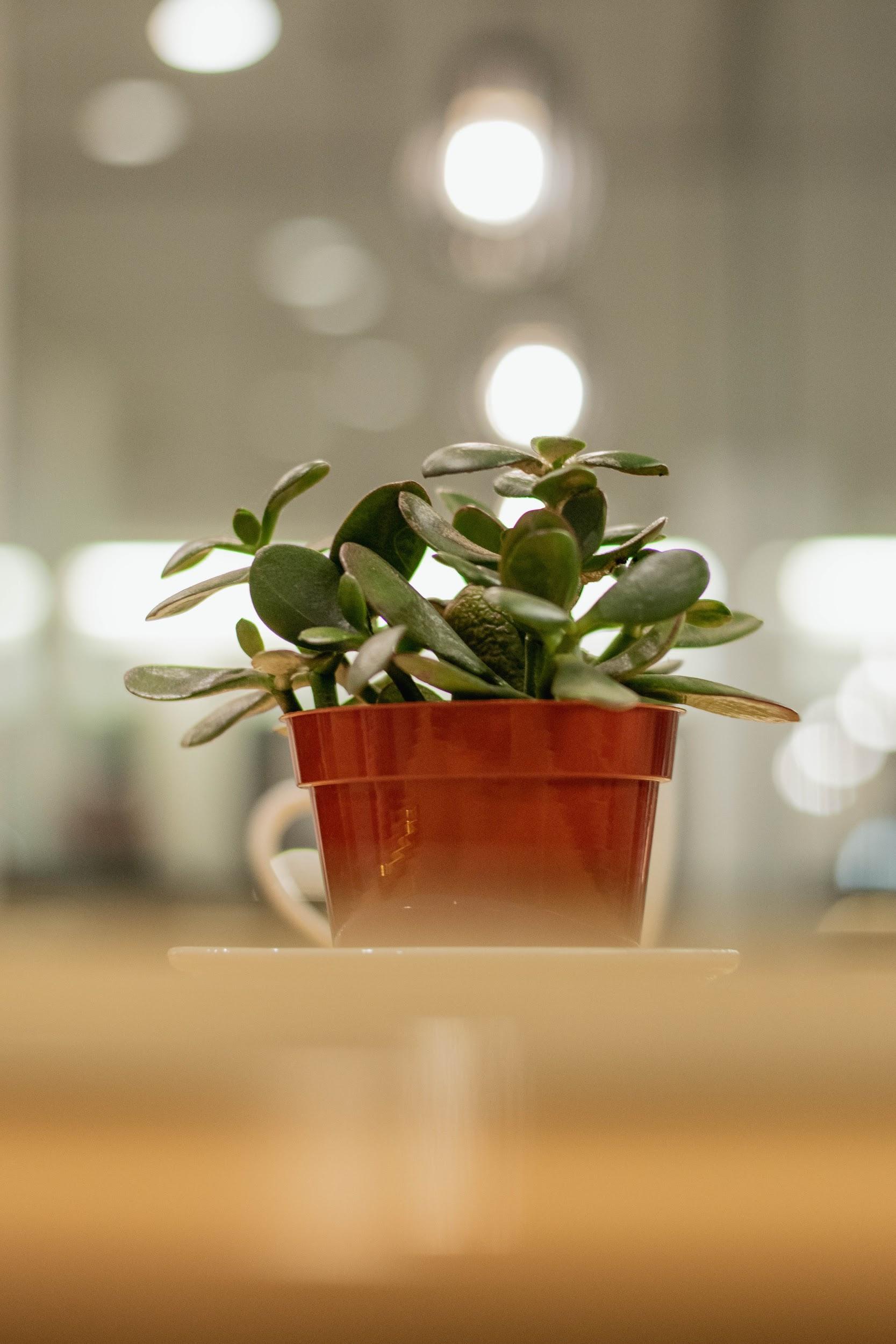
Jade
How To Choose The Right Hanging Plant For Your Home
“How to Choose the Right Hanging Plant for Your Home”
When it comes to hanging plants, there are a few things you’ll want to take into consideration before making your final decision. Here are a few factors to consider when choosing the right hanging plant for your home:
1. The size of your space.
You’ll want to make sure that the hanging plant you choose is the right size for the space you have available. If you have a small space, then you’ll want to choose a smaller plant. If you have a large space, then you can go for a bigger plant.
2. The amount of sunlight.
Hanging plants need sunlight to thrive, so you’ll want to make sure that the spot you choose receives enough sunlight. If you’re not sure how much sunlight the spot gets, you can always ask a staff member at your local nursery.
3. The type of plant.
There are many different types of hanging plants, so you’ll want to choose one that will do well in your specific environment. If you live in a warm climate, you’ll want to choose a plant that can tolerate the heat. If you live in a cold climate, you’ll want to choose a plant that can tolerate the cold.
4. Your own personal style.
This is probably the most important factor to consider when choosing a hanging plant. You’ll want to choose a plant that you personally love the look of. This way, you’ll be more likely to take care of it and keep it alive.
5. The care requirements.
Before you choose a hanging plant, you’ll want to make sure that you’re prepared to take care of it. Some plants require more care than others, so you’ll want to choose one that you’re able to take care of.
6. Your budget.
Hanging plants can range in price, so you’ll want to choose one that fits into your budget. You don’t want to spend more than you can afford on a plant, but you also don’t want to choose a plant that’s too cheap and of poor quality.
7. The long-term.
You’ll want to make sure that the hanging plant you choose is one that you can keep for the long-term. Some plants only last for a few years, while others can last for decades. Choose a plant that you can keep for the long haul.
By following these tips, you’ll be sure to choose the right hanging plant for your home.
What You Need To Hang Your Plants
In order to hang a plant, you will need the following items:
-A pot or planter
-A hook or hanger
-Plant food or soil
-Water
First, choose a pot or planter for your plant. It should be big enough to hold the plant and have drainage holes in the bottom. Then, find a hook or hanger that will fit onto the pot or planter. Make sure the pot or planter is not too heavy for the hook or hanger.
Next, add plant food/soil to the pot or planter. This will help the plant grow. Then, add water. The plant will need water to grow.
Finally, hang the pot or planter from the hook or hanger. Make sure the pot or planter is not too heavy for the hook or hanger.
That’s it! You now know what you need to hang a plant.
How To Care For Your Hanging Plants
To keep your hanging plants healthy and happy, follow these simple tips:
1. Give them plenty of light. Hanging plants need at least six hours of sunlight per day, so place them in a bright spot in your home. If you can’t give them that much light, you can supplement with artificial light.
2. Water them regularly. Check your plants every few days to see if they need water. Water them until the soil is moist but not soggy.
3. fertilize them. Once a month, fertilize your plants with a water-soluble fertilizer.
4. Prune them as needed. Trim off any dead or dying leaves or stems to keep your plant looking its best.
Following these simple tips will help you keep your hanging plants healthy and happy.
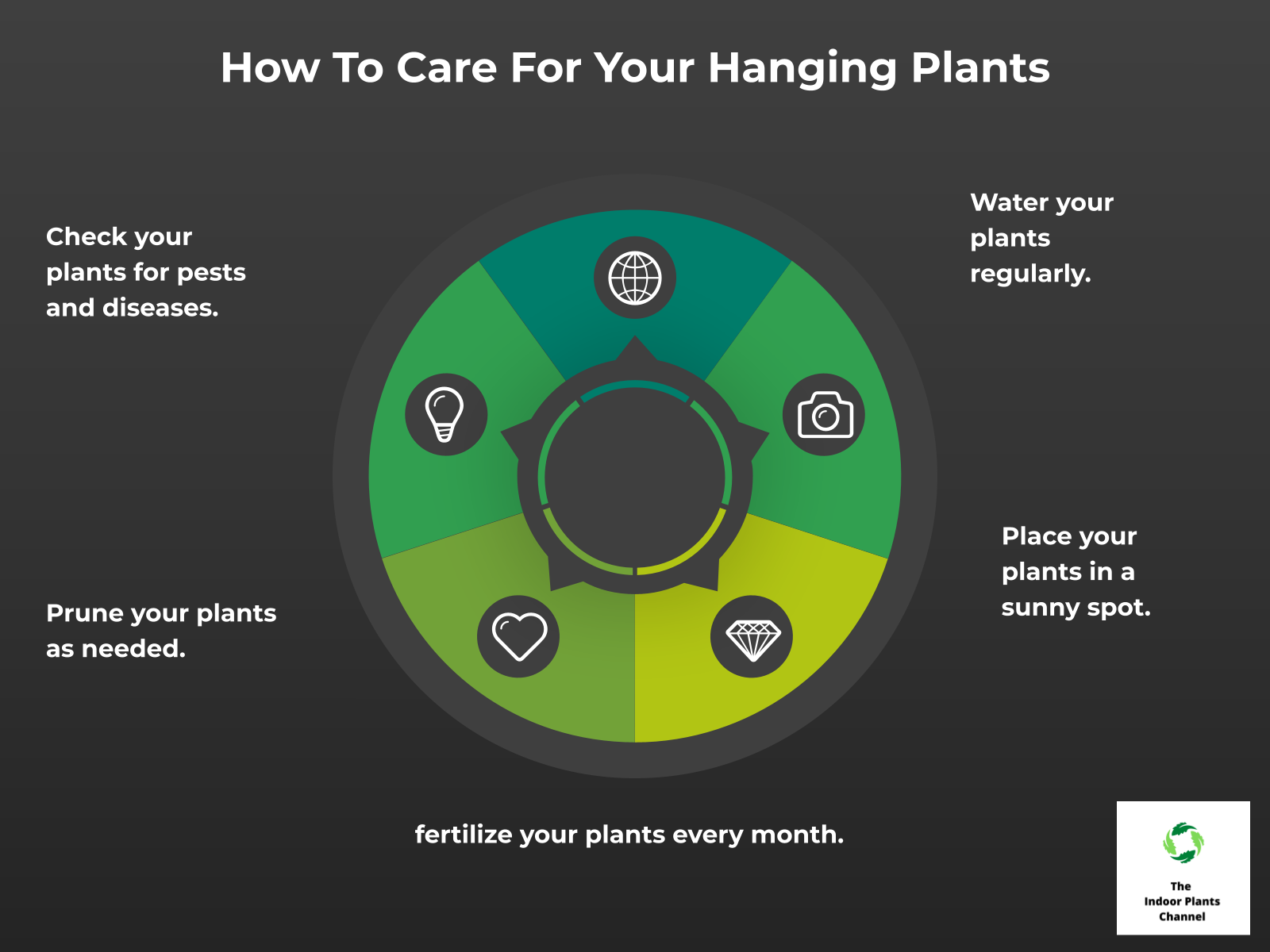
The Best Places To Hang Your Plants
If you’re looking for the best places to hang your plants, there are a few things to consider. First, think about the amount of light the spot gets. Plants need sunlight to grow, so a spot that’s too shady won’t work well. Second, consider the temperature of the spot. Some plants like it warm, while others prefer it cool. Third, think about how much water the spot gets. Some plants need to be watered more often than others, so a spot that’s too dry might not be ideal.
Now that you know what to look for, here are some of the best places to hang your plants:
1. On a sunny windowsill – This is one of the best spots for plants that need a lot of light. Just be sure to open the window from time to time to give them some fresh air.
2. In front of a fan – This is a great spot for plants that like it a little cooler. The moving air will help keep them from getting too hot.
3. In a terrarium – This is a great option for plants that need a lot of humidity. A terrarium is like a mini greenhouse, so it will create a perfect environment for your plants.
4. On a plant stand – This is a great way to display your plants and keep them out of the way of pets or small children.
5. In a hanging basket – This is a great option for plants that need to be watered more often. The basket will hold the water, so your plants will always have access to it.
No matter where you choose to hang your plants, just be sure to give them the care they need. With a little love, they’ll thrive in any spot you choose!
How To Create Beautiful And Eye-catching Hanging Plant Displays
“How to Create Beautiful and Eye-Catching Hanging Plant Displays”
Creating beautiful and eye-catching hanging plant displays is not as difficult as it may seem. With a little bit of creativity and effort, anyone can do it!
Here are some tips on how to create stunning hanging plant displays:
1. Choose the right plants. Not all plants are suitable for hanging baskets. Some plants are too heavy, while others may not have enough leaves or stems to create a full and lush display. When choosing plants for your hanging baskets, be sure to pick ones that are light and airy, with long stems and plenty of leaves.
2. Pick the right size baskets. The size of the baskets you use will depend on the size of the plants you have chosen. If you are using large plants, then you will need large baskets. Smaller plants will do fine in smaller baskets. It is also important to consider the weight of the baskets when choosing their size. The heavier the baskets, the sturdier the support structure will need to be.
3. Create a focal point. Every good display has a focal point, something that draws the eye and makes the viewer want to take a closer look. When creating a hanging plant display, choose one plant to be the focal point and build the rest of the display around it. This can be done by choosing a plant with a striking color or interesting shape, or by placing it in the center of the display.
4. Use odd numbers. When arranging plants in a hanging basket, it is generally best to use odd numbers. This creates a more balanced and pleasing look. Try grouping plants in threes or fives, rather than in twos or fours.
5. Vary the heights. Another way to create a more pleasing and balanced display is to vary the heights of the plants. Place taller plants in the center or back of the basket, and shorter plants in the front or sides. This will give the display more dimension and interest.
6. Add some color. Flowers are a great way to add color to a hanging plant display. Choose plants with colorful blooms that will complement the other plants in the basket. Place the flowers throughout the display, or group them together for a more dramatic effect.
7. Use trailing plants. Trailing plants are perfect for hanging baskets because they can spill over the sides of the basket, creating a cascade of color and texture. Be sure to choose plants that have long stems so they can trail down nicely.
8. Keep it simple. Sometimes, less is more. A hanging plant display does not have to be overly complicated or busy to be beautiful. Sometimes, a simple arrangement of a few plants can be just as stunning as a more elaborate one.
By following these tips, you can create beautiful and eye-catching hanging plant displays that will add style and sophistication to any space.
The Do’s And Don’ts Of Hanging Plants
Hanging plants are a great way to add some greenery to your home without taking up a lot of space. But there are a few things you need to keep in mind when hanging them up.
Here are the do’s and don’ts of hanging plants:
Do:
-Pick a spot that gets plenty of light. Most plants need at least six hours of sunlight a day to thrive.
-Make sure the spot you choose is out of reach of any pets or small children. Some plants can be toxic if eaten.
-Use a pot with a drainage hole. This will help prevent your plant from getting overwatered.
-Use a hanger that can support the weight of your plant. A pot filled with soil can be quite heavy, so make sure the hanger can hold it up.
-Water your plant regularly. Check the soil to see if it’s dry before watering.
Don’t:
-Hang your plant too high up. It needs to be within reach so you can water it and check on it easily.
-Put your plant in a spot where it will get too much direct sunlight. This can scorch the leaves and damage the plant.
-Use a pot without a drainage hole. This can lead to your plant getting overwatered.
-Hang your plant from a flimsy hanger. The plant will be heavy when it’s wet, so make sure the hanger can support it.
-Forget to water your plant. Most plants need to be watered at least once a week.
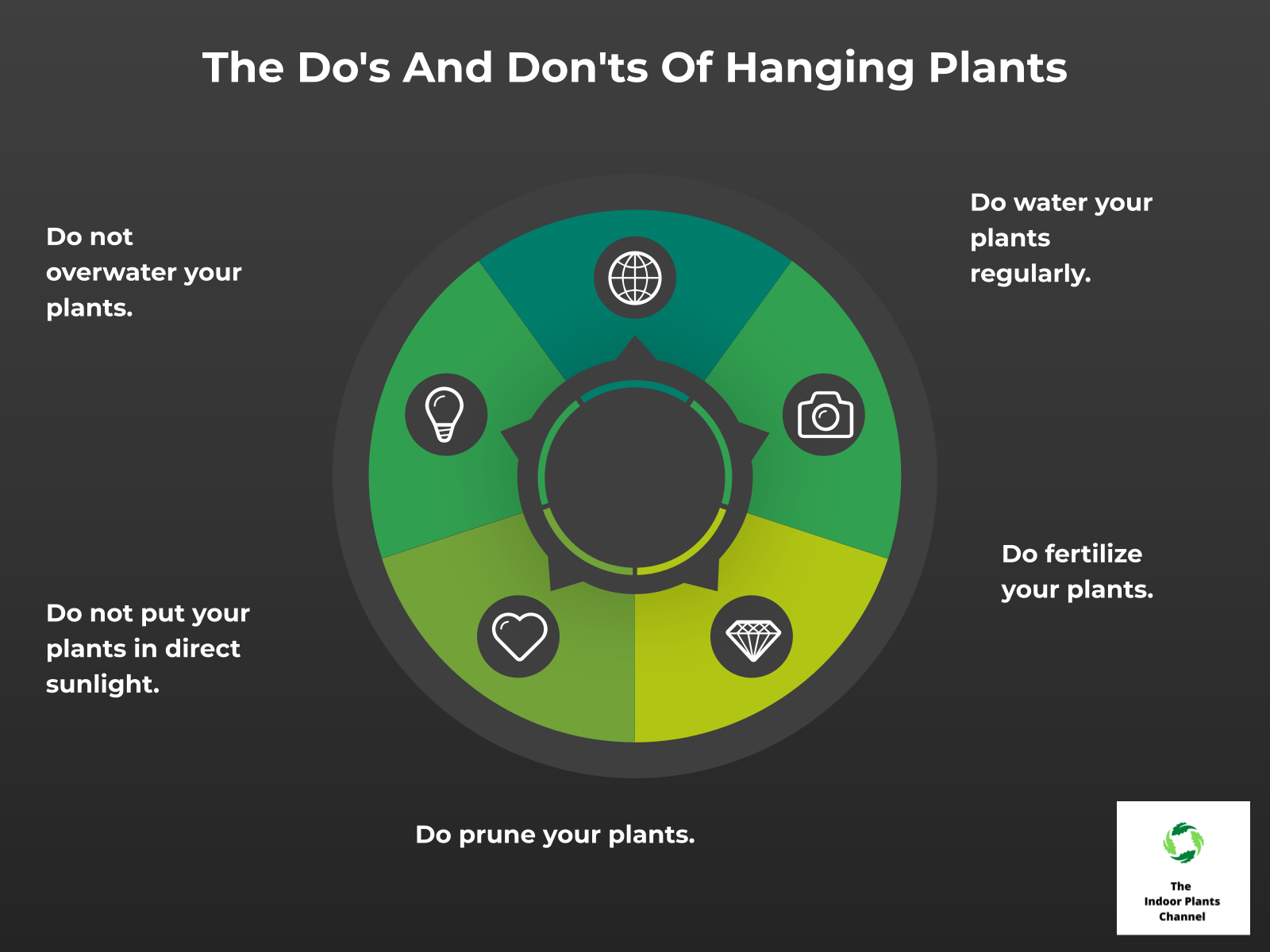
The Most Common Mistakes People Make When Hanging Plants
The most common mistake people make when hanging plants is not considering the weight of the plant. Make sure to use a sturdy hook that can hold the weight of the plant, or the plant will eventually fall and possibly break.
Another common mistake is not giving the plant enough light. If a plant is not getting enough light, it will not be able to photosynthesize and will eventually die. Make sure to place the plant in a spot where it will get enough light.
People also often forget to water their plants. Make sure to water the plant regularly, especially if it is in a pot. Plants in pots will dry out faster than plants in the ground.
Finally, people sometimes forget that plants need nutrients. Just like people, plants need food to grow. Use a plant food every few weeks to give the plant the nutrients it needs to grow strong and healthy.
Conclusion
If you’re looking for a way to add some life to your home, consider hanging plants! They’re easy to care for and can really brighten up a space. Plus, they can help purify the air and improve your indoor air quality. Check out this advanced guide to hanging plants to learn everything you need to know to get started.
Michelle Wilde
Related posts
7 Comments
Leave a Reply Cancel reply
![]()
About Michelle Wilde
Michelle Wilde is a stay-at-home mom and avid plant lover. Armed with a post-graduate degree in Computer Science (no kidding!), she loves researching plants and landscapes. When she is not caring for her 4 kids, she spends time on her passion for plants. She blogs at www.indoorplantschannel.com, the trusted source for indoor plants.
Learn more
Subscribe
* You will receive the latest posts and updates about indoor plants!
Search
Recent Posts
Categories
- Beginner Guides (10)
- FAQ (206)
- General (2)
- How-To Guides (212)
- Indoor Plants (214)
- Pest Management (2)
- Plant Problem Solutions (4)
- Seasonal Growing (2)
- Specialized Environments (2)
- Specific Plant Care (3)
- Technical Growing (2)
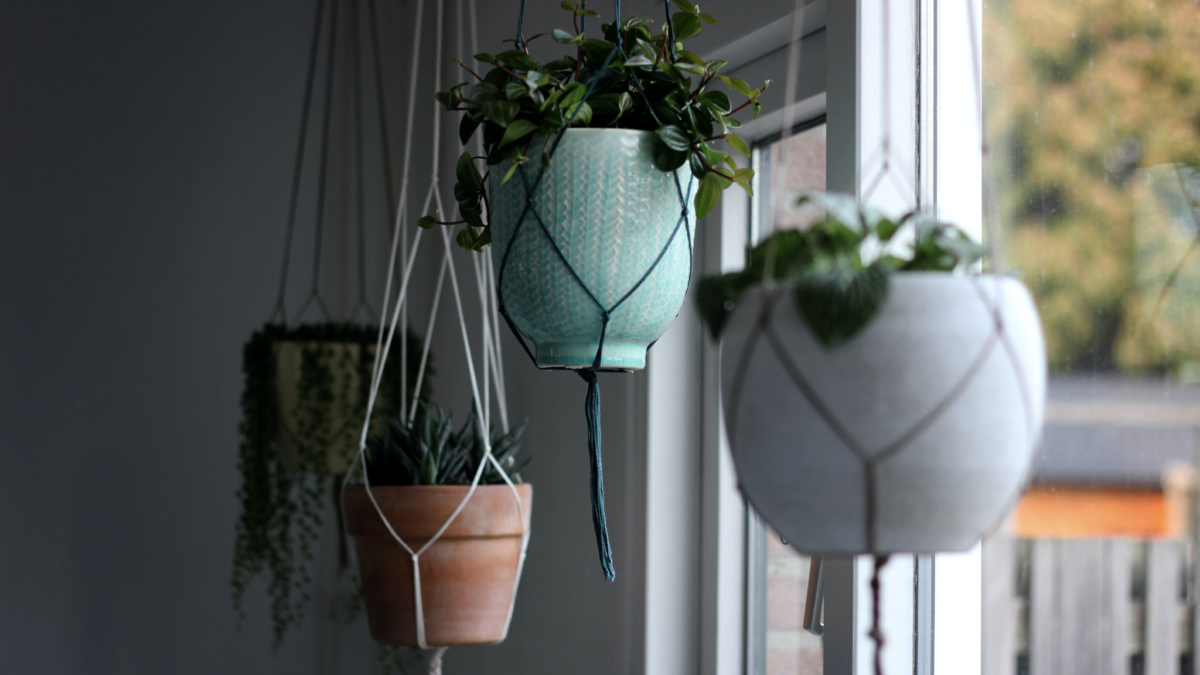
[…] you’re looking for a creative way to add some greenery to your home, why not try making your own hanging plant?? It’s easier than you might think, and you can customize it to fit your own personal style. […]
[…] fear, we’re here to help. In this blog post, we’ll show you how to pick the perfect hanging plant for your space. We’ll cover everything from the type of plant to the size and shape of the pot. […]
[…] plant, which means that it will spill over the edge of its pot or container. This makes it a great plant for hanging baskets or shelves. Pothos is a very easy plant to care for, and it is a great choice for […]
[…] you have hanging plants in your home, you may have noticed that birds like to build nests in them. This can be a nuisance, […]
[…] Hang air plants in a bright spot […]
[…] Hang the spider plant from the ceiling […]
[…] Hanging plants are plants that are grown in containers and suspended from the ceiling or a wall. They are a great way to add some greenery to your home without taking up valuable floor space. […]